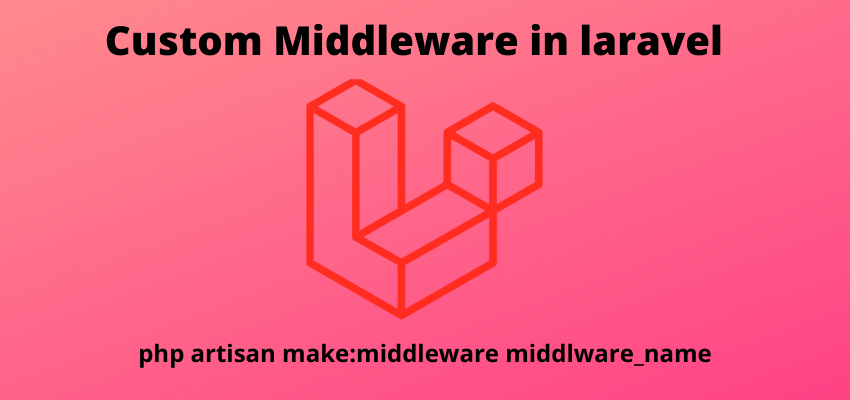Attachment with mail is very important feature of mail by which we can attach any document with our email , for example in some scenarios we want to send the invoice to user mail or some guideline to user after registration. So in this article we will learn to use send mail with attachment(PDF, docs,image) in laravel. Email is very common operation of any website like sending an email to users after registration, sending invoice, PDF, DOC, Send newsletters to users and many more. Laravel provides multiple drivers or services to send mail from different different providers.
attach() Method :
Laravel mailer class uses attach() method to add the attachment in mail. attach() method accepts first parameter as full file path and second as options like filename and mime type as below
return $this->view('emails.test')
->attach('full/path/to/file', [
'as' => 'name.pdf',
'mime' => 'application/pdf',
]);If you want to attach a uploaded file then
return $this->view('emails.test')
->attach(request()->file("document")->getRealPath(), [
'as' => request()->file("document")->getClientOriginalName(),
'mime' => request()->file("document")->getClientMimeType(),
]);
//or
return $this->view('emails.test')
->attach($this->document->getRealPath(), [
'as' => $this->document->getClientOriginalName(),
'mime' => $this->document->getClientMimeType(),
]);Attach File from Disk:
If you want to attach a file from storage folder which is already stored in storage folder then you can use attachFromStorage method
public function build()
{
return $this->view('emails.test')
->attachFromStorage('/path/to/file',[
'as' => 'name.pdf',
'mime' => 'application/pdf',
]);
}Attach from other disk like s3 :
May be sometimes we need to attach from other storage rather then default file storage so we can use attachFromStorageDisk
public function build()
{
return $this->view('emails.test')
->attachFromStorageDisk("s3",'/path/to/file',[
'as' => 'name.pdf',
'mime' => 'application/pdf',
]);
}Attach Raw Data (PDF in memory or String of Byte):
Sometimes you make some file in memory only and not save in storage so in that case you can use attachData method
public function build()
{
return $this->view('emails.test')
->attachData($this->file,name.pdf,[
'mime' => 'application/pdf',
]);
}Laravel gives wide range of options to send emails. We can queue an email for send on specific time using the queue drivers.
Following are the supported methods of Laravel mail
- Amazon SES
- MailGun
- Sendmail
- SparkPost
- SMTP
Laravel Mailing supports blade views based templating system so you can easily configure the mail body layout same as other pages.
It also gives a easy to implements mail with attachment feature so let’s start with example
Step 1: Create a laravel project
First step is to create the Laravel 8 project using composer command or you can also read the How to install laravel 8 ? and Laravel artisan command to generate controllers, Model, Components and Migrations
composer create-project laravel/laravel example-appStep 2 : Configure the mail
SMTP
MAIL_DRIVER=smtp
MAIL_HOST=smtp.gmail.com
MAIL_PORT=587
MAIL_USERNAME=username
MAIL_PASSWORD=password
MAIL_ENCRYPTION=tls
MAIL_FROM_ADDRESS=fromaddress
MAIL_FROM_NAME="${APP_NAME}" If the website is secure ssl then change ‘encryption’ => ‘tls’ to ’encryption’ => ‘ssl’ and ‘port’ => 465
Step 3 : Generate Mailable Class
In laravel 8 or 9 every mail is implements mailable class thus first we need to create a mail class as follow
php artisan make:mail TestMailThis will create a class in following location App\Mail\TestMail.php
<?php
namespace App\Mail;
use Illuminate\Bus\Queueable;
use Illuminate\Contracts\Queue\ShouldQueue;
use Illuminate\Mail\Mailable;
use Illuminate\Queue\SerializesModels;
class TestMail extends Mailable
{
use Queueable, SerializesModels;
/**
* Create a new message instance.
*
* @return void
*/
public function __construct()
{
//
}
/**
* Build the message.
*
* @return $this
*/
public function build()
{
return $this->view('test');
}
}
Update the code as below
<?php
namespace App\Mail;
use Illuminate\Bus\Queueable;
use Illuminate\Contracts\Queue\ShouldQueue;
use Illuminate\Mail\Mailable;
use Illuminate\Queue\SerializesModels;
class TestMail extends Mailable
{
use Queueable, SerializesModels;
private $user;
private $data;
/**
* Create a new message instance.
*
* @return void
*/
public function __construct($user,$data)
{
$this->user=$user;
$this->data=$data;
}
/**
* Build the message.
*
* @return $this
*/
public function build()
{
return $this->from('info@readerstacks.com')
->subject('Mail from readerstacks.com')
->attach($this->data['document']->getRealPath(),
[
'as' => $this->data['document']->getClientOriginalName(),
'mime' => $this->data['document']->getClientMimeType(),
]);
->view('emails.test',["user"=>$this->user,"title"=>"Register"]);
}
}
Step 4 : Create View for Mail
Create a simple view for mail body in resources/views/emails/test.blade.php
<!DOCTYPE html>
<html>
<head>
<title>Readerstacks.com</title>
</head>
<body>
<h1>Hello {{ $user['name'] }}, download the attachement</h1>
<p>{{ $user['body'] }}</p>
<p>Thanks to visit us.</p>
</body>
</html>Step 5 : Create Route and Send Mail
Now, create a route and call Mail methods in inline function as below
<?php
use Illuminate\Support\Facades\Route;
use Illuminate\Http\Request;
Route::get('/send-mail',function(Request $request){
$user = [
'name' => 'Readerstacks',
'body' => 'This is simple mail from Readerstacks'
];
$data = [
'document' => $request->file("document"),
];
\Mail::to('receiver_email@domain.com')->send(new \App\Mail\TestMail($user,$data ));
});
Also Read : How to Send Mail in Laravel Through Gmail SMTP ?



